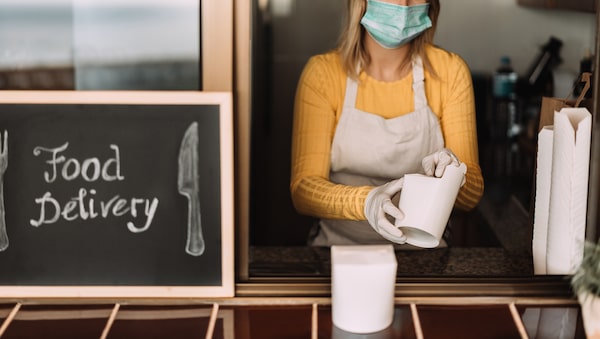
Our foodservice industry, which according to Restaurants Canada was worth $93-billion pre-pandemic, is now catering to customers with take-home meals and prepared foods like marinated meats and signature sauces and spice rubs.iStockPhoto / Getty Images
The overarching theme of 2020 – staying in – is spilling over into 2021, and though there is some light at the end of this long, lonely tunnel, we won’t be rushing back into cafés and restaurant dining rooms anytime soon. So whether we’re cooking from scratch, picking up curbside or ordering delivery, for the most part, we’re eating in.
We’ve collectively prepared more meals at home this year than we ever have, honing our cooking and meal-planning skills, learning how to use what we have and paying attention to food waste. Beyond COVID-19-related public-health advisories and bylaws that prevent us from eating out, continuing economic uncertainty will undoubtedly affect how we decide what’s for dinner. According to a report released in December by the Agri-Food Analytics Lab at Dalhousie University, 32 per cent of Canadians feel the pandemic will affect their ability to pay for food in 2021.
Even restaurants are focused on in-home dining. As our food-service industry – which according to Restaurants Canada was worth $93-billion prepandemic and is one of the industries most devastated by COVID-19 restrictions – scrambles to stay afloat, the focus of chefs and restaurateurs isn’t so much on what to serve, but how. With closed or nearly empty dining rooms, restaurants are revamping menu items to make more sense as take-home meals, and eateries are developing prepared foods, such as marinated meats, signature sauces and spice rubs, to sell to home cooks. Some chefs are playing host to virtual cooking classes to reach their clientele in their own kitchens – all in an attempt to slow the financial bleed.

Whether we’re cooking, assembling, reheating or greeting the delivery driver at the door, the future of food – for now – is around our own tables.iStockPhoto / Getty Images
Since March, 2020, more than 10,000 restaurants have permanently closed across the country, and almost 50 per cent of those remaining are likely to follow if conditions don’t improve, Restaurants Canada reports. While some eateries were already well suited to takeout, destination restaurants such as Rouge in Calgary, which for almost two decades has offered a unique fine-dining experience in a heritage house setting, are shifting to freezable and fridge-stable dishes for customers to take home.
“Food brings comfort, pleasure, health and dignity, and we love any opportunity to nourish people, whether it’s in our house or in their home,” chef and co-owner Paul Rogalski says. “But we had to rethink our dine-in menu. We’ve started making items from scratch that people can easily reheat and plate themselves at their own convenience.”
Whether we’re cooking, assembling, reheating or greeting the delivery driver at the door, the future of food – for now – is around our own tables.

iStockPhoto / Getty Images
Plan your weekend with our Good Taste newsletter, offering wine advice and reviews, recipes, restaurant news and more. Sign up today.